"Starfire" of the Korean War. Interceptor F-94 "Lockheed"
After the end of the Second World War, yesterday's allies - the United States, Great Britain, France and the Soviet Union - in every possible way demonstrated their peaceable intentions to each other. But it took only some two years, and the time of friendly handshakes between the leaders of the victorious countries has sunk into oblivion. The United States as the nuclear monopolists who first created weapon mass destruction, were calm for the integrity of their country and selflessly indulged in the post-war device of a liberated Europe. However, after in 1947, during the celebration of Soviet Day aviation in Tushino, in the sky, the first three Tu-4 serial bombers went in formation, the Americans no longer felt safe. Since the USSR was soon to receive nuclear weapons, the appearance of a strategic carrier shocked the US military top, as now, theoretically, the territory of the States themselves was vulnerable to nuclear weapons.
Before 1960, bombers were the only carrier of nuclear weapons dangerous to the American continent, and fighters-interceptors equipped with search radar were considered the best means of defense since World War II. However, after the end of the war, the US Army Air Forces found themselves without a modern all-weather fighter capable of withstanding the newly emerging threat. The first attempts to create a jet all-weather fighter were unsuccessful. So, ordered in December 1945 of the Curtiss XF-87 "Blackhawk" faced various problems and work on it was stopped in October 1948-th. More promising was the Northrop F-89 Scorpion project, but the work on it went slowly, and the launch of the first combat-ready part with this interceptor was expected no earlier than 1952 of the year. As a result, the base of the air defense system was already completely outdated by the Northrop P-61 Black Vision. In order to fill the gap in the US defense, in anticipation of the appearance of the Scorpion, a night fighter was urgently ordered on the basis of the twin Mustang piston-based North American F-82.
Wanting to get a night time interceptor immediately, in March 1948, the US Army Air Force offered to lock Lockheed a two-seat TF-80С and equip it with Hughes E-1 fire control system. The latter was an AN / APG-33 locator and a Sperry A-1C guidance system computer. The US Air Force demanded that the first serial night interceptor be released no later than the end of 1949 of the year.
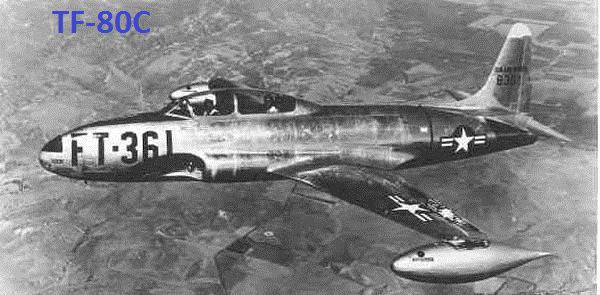
Lockheed assigned the designation “780 Model” to the project. Work on the new fighter was assigned to a group of designers led by Russ Danielle. Fortunately, the TF-80C had enough free space to accommodate the fire control system in the nose and the radio operator's equipment behind the pilot's cabin. So the work went pretty smoothly. The contract for the development of the aircraft was concluded in January 1949 year, with the aircraft received the designation Starfire F-94.
However, at the beginning of the design work, it became clear that the Allison J33 engine used on the TF-80C does not have enough power to compensate for the increased take-off weight of the aircraft. As a new power plant, it was decided to use Allison J33-A-33 kg 1997 kg and 2724 kg afterburner. Installing an afterburner on the engine resulted in a lengthening and increase in the height of the rear fuselage, which shifted the center of gravity back. But this was compensated by the installation in the elongated nose of the locator ARG-32.
The armament was originally planned from six X-NUMX-mm M-12,7 machine guns, but only four were squeezed into the fuselage. They were mounted below the nose of the fuselage. Air intakes were redesigned and enlarged. The plumage area also increased, and the internal fuel supply amounted to 3 l. True, at the wingtips it was possible to hang two more 1205-l tanks.
As the experimental machines were used two modified TF-80C. They received the designation ETF-80C, and later they were renamed ET-ZZA. Informally, the planes were called YF-94. They did not have most of the planned, to be installed on the interceptor, equipment. These machines made their first flight under the control of pilots Tony Live and Glenn Fulkrson 16 on April 1949.
Flight tests showed satisfactory machine handling, slightly disturbed at the time of the boost connection. At that time, the afterburner was still a novelty, which caused certain problems. YF-94 engines are often stalled, and restarting them was problematic. This required the hard work of engineers Ellison and Lockheed, who sought reliable operation of the afterburner system. Solving this problem allowed launching the F-94 into a series and adopting it.
The first serial version of the F-94 interceptor was ordered in January 1949, and the 109 machines practically did not differ from the YF-94, with the exception of the installation of all the equipment provided. The first 17 interceptors were actually T-33 “converted on the knees”, taken from the assembly line, the next ones were made anew. Armament aircraft could now be supplemented with a pair of 454-kg bombs. Underfloor fuel tanks, it was decided to replace with one ventral tank with a capacity of 872 l.
The first car the US Air Force took in December 1949 of the year. In this case, the F-94A is the first US serial fighter with an afterburner engine and the first all-weather jet interceptor. Starting in May 1950, the Starfire replaced the North American F-82 Twin Mustang as part of the 317 squadron of fighter-interceptors at McCord airbase and the 319 squadron at Mozlake airbase. However, the new aircraft still suffered from "childhood diseases" associated with the engine and electronic equipment.
The next serial version of Starfire is the F-94B. From the version “A” it differed mainly in improved and more reliable equipment. For testing new systems, the nineteenth F-94А was re-equipped. The aircraft was renamed to YF-94. The aircraft received the Sperry Zero Reader landing system, improved hydraulics and a high-pressure oxygen system. The cockpit has become more spacious. The ventral tank is now standard. For the first time, the YF-94B was flown around 28 on September 1950 g, and the first serial F-94В was delivered to the USAF in January 1951. The next series of this modification was intended for service in arctic conditions.
The first F-94B entered the 61 Squadron of fighter-interceptors at the Selfridge Airbase in Michigan in April 1951. In total, 355 machines of modification “B” were released. They managed to solve most of the problems pursuing the F-94. The new version of the interceptor proved to be quite reliable in the service.
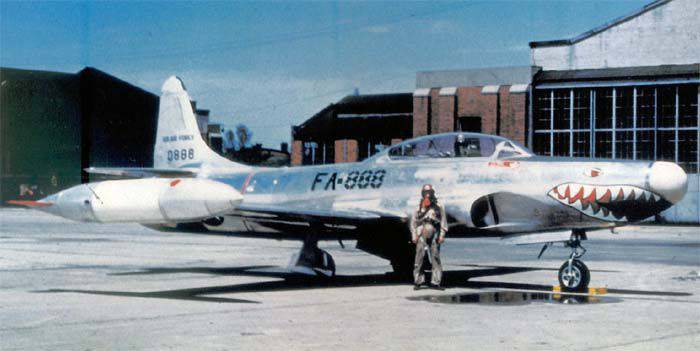
The F-94A / B was primarily intended to serve in Continental Air Command, which was formed in December 1948 of the year, bringing together Air Defense Command and Tactical Air Command. Starfire was also in service with the Alaska Air Command, which opposes a possible US incursion from Siberia. For three years — from 1950 to 1953 a year — these interceptors were the backbone of the United States air defenses, which at any time were waiting for a raid by Soviet Tu-4 bombers with nuclear bombs. Starfire was the only US all-weather jet interceptor. After the treatment of “childhood diseases”, F-94 became quite reliable and relatively easy to operate by plane. However, Lockheed's jet interceptor had a short range, low climb rate and a clearly inadequate firepower to defeat bombers. Reliability and characteristics of the radar also did not cause delight, although in ideal conditions it could detect the B-29 bomber at a distance of 16,4 km.
It should be noted that, as it turned out later, the threat from the Soviet strategic bombers at the beginning of the fifties was exaggerated, this, in fact, did not diminish the importance of the F-94 that appeared when the US aircraft industry could not offer anything better.
Starfire became the first American all-weather fighter jet that went into battle (before it, only Messerschmitt Me-262В equipped with a radar managed to take part in the fighting). The first F-94А entered service with the Far Eastern Air Force in Japan in March 1951 of the year - it was equipped with the 68 squadron of interceptor fighters at Itatsuke airbase. Their main task was to cover the American bases in Japan from a possible raid by Soviet bombers. At the end of 1951, this squadron began sending two Starfires, each for duty, at the Suwon airfield in Korea. They were alerted in the event of the appearance of North Korean night bombers. Later, the 339 th fighter-interceptor squadron, rearmed in 1951 from F-82 to F-94В, was also connected to night duty. The first flight of the Starfire of this squadron was carried out from Suwon 22 March 1952.
Initially, F-94 was used in Korea only to cover its bases from enemy night bombers. Flying over the territory controlled by the Korean Peoples Army was forbidden, because the Americans were afraid that their locator could fall into the hands of the enemy. However, as the losses of the American B-29 bombers that made night raids on Sino-Korean units, this limitation was lifted in January 1953. The very first flights for the 38 parallel brought unpleasant surprises to the Americans. One F-94 was lost. According to the Americans, he died as a result of a collision with the MiG-15 at high altitude. The pilot and interceptor operator ejected. From March to April, the Starfares used to escort B-1953 heavy bombers. Interceptors marched in front of the strike vehicles and looked through their radar airspace. According to the Americans, for all 29 sorties for escort, there was not a single combat clash. The first win of the F-10 was scored at night on January 94 on 30. In this departure, the interceptor under the control of the pilot, captain B.L. Fisiena and operator Lieutenant S.R. Lyons shot down in the dark night by a piston fighter Lavochkin La-1953.
In most cases, the main opponent of American interceptors were low-speed aircraft Po-2, Yak-9 or Yak-18. Naturally, it is quite difficult to shoot down such aircraft on a high-speed car, and sometimes for American pilots such an interception ended tragically. For example, 3 in May 1953, the pilot of the F-94 Wilcox did not take into account the large difference in speed with the Korean Po-2 and collided with the enemy. The next day, under similar circumstances, another Starfire was lost by the Americans. This time the pilot overdid it, slowing down his car, lost speed and crashed into the ground. 10 May 1953 on F-94 won another victory. The crew of the pilot captain Phillips and the radar operator Captain Atto managed to quietly get close to the MiG-15 and bring it down. The last victory at Starfare was won on 7 on June 1953 of the year over the MiG-15, near the Yalu River. According to American data, only one Lockheed jet interceptor was lost during the Korean War, which was rammed by MiG-15. According to the Soviet data, our pilots shot down the 12 Starfire; in addition, one F-94 was shot down by Chinese pilots.
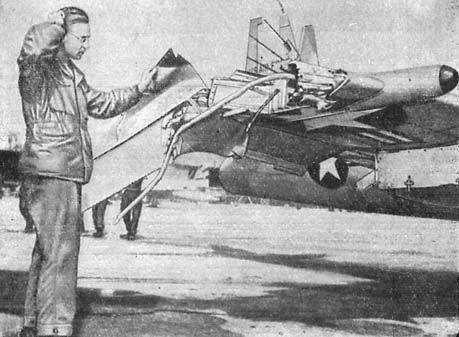
This difference is due to the fact that hiding the true picture of the losses of the heavy B-29 bombers, the Americans had to hide the shot down Starfires that carried them out. And at the end there are some more statistics: for the entire war, the F-94B made 4694 combat sorties, counted 5 piston airplanes (1 La-9 and 4 Po-2) and three jet MiG-15.
One of the F-94B was modified into an experimental aircraft for testing the locator and guidance system of the Bomark F-99 (later renamed IM-99). Locator nose and armament from the aircraft were removed and replaced with a nose taken from the rocket.
F-94А / В were also in service with three squadrons of National Guard Air Force interceptors, which, after the start of the Korean War, were immediately transferred to the US Air Force. After 31 October 1951, these squadrons returned to the States, "Starfire" remained in the US Air Force.
The United States Air Force "Starfire" models "A" and "B" began to be removed in the middle of 1954, as more advanced Scorpion interceptors F-89C / D and North American F-86D "Saber" arrived. At the same time, F-94 was transferred to units of the National Guard. There, starting in June 1953, the Starfires changed in the X-NUMX interceptor squadron F-137H Mustangs. Before being delivered to the F-51А / В units, the guard was expanded - the cockpit was expanded, which increased the chances of a successful bailout (the initial narrow cockpit caused several tragic incidents during emergency bailout attempts).
As part of the National Guard Air Force F-94B received two containers with two 12,7-mm machine guns in each. The number of machine guns has now reached eight. The last Starfire was decommissioned in 1959.
The possibility of creating an combat-training interceptor based on the F-94В, which even received the intra-company designation L-199, was considered, but it did not come to the realization of the project.
F-94A / Starfire was considered by the USAF only as a temporary solution, pending the introduction of new, more efficient interceptors. "Starfire" was quite reliable aircraft, easy to maintain, but did not have the necessary range and had too weak weapons, especially to intercept bomber.
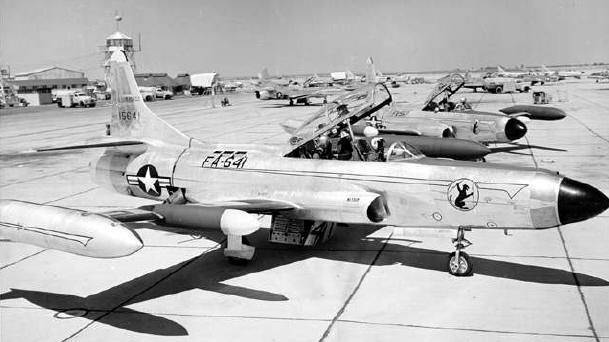
In July 1948, four months before receiving the contract for the first batch of F-94A, Lockheed offered the US Air Force an improved version of this aircraft. The project bore the in-house designation L-188 and featured a new, thinner wing designed to achieve higher speeds. At the same time, the fuel supply increased, new air brakes were installed, as well as the new Pratt & Whitney J48 forced engine, which was a licensed version of the British Rolls-Royce "Thay". At the afterburner, the engine produced thrust up to 3972 kg. The installation of a more powerful engine forced the redesign of the air intakes for a larger section. It was planned to install a new Hughes E-5 fire control system with an ARG-40 locator on the plane. The armament was supposed to be purely missile with a launcher in the bow.
The US Air Force was initially not interested in this project, since it was planned to focus the main work on fine-tuning the North American F-86D Saber and Northrop F-89 Scorpio. However, the USAF gave the new designation F-97, as it provided for a complete rework of the F-94.
Despite the cold meeting of the project in the Air Force, Lockheed decided to start work on the first experienced L-188 aircraft at her own expense. For this, the wing from the L-188 project was decided to be installed on the fuselage of the F-94A, from which the weapons and all electronic equipment were removed. Since the engine was not yet ready, it was decided to put the British Rolls-Royce "Tay" on an experienced aircraft without an afterburner.
The plane received civilian registration, and on its first flight it went up on 19 on January 1950, under the control of test pilot Tony Levera. The aircraft retained the nose of the F-94A and had substandard, drop-shaped end fuel tanks. The USAF L-188 liked it and they acquired it by assigning the designation YР-97. At the same time, the Air Force ordered an armed version of the YF-97. An order was also placed on the 180 new serial interceptors, which also received the brand designation “880 model”.
Tests YF-97 revealed a number of deficiencies of the aircraft, which required fine-tuning: the fairing of the wing reduced in size, which improved handling at low speeds. The original stabilizer modeled on the F-94 was replaced with arrow-shaped, which eliminated its vibration at transonic speeds. A damper was installed in the roll control channel, which excluded aileron vibration. To increase the speed of roll on the wing installed spoilers. When the American version of “Tay” finally appeared, the first experienced YP-97 was equipped with J48-P-3 2724 kg and 3632 kg afterburner.
12 September 1950 of the year YF-97 was renamed to YF-94C. Although the new Starfire was actually another plane, it was believed that it retained continuity with its prototype. As a result, for "political reasons" it was decided to keep the old number of the fighter.
The two experienced YF-94Cs were further used to refine the new fire control system and missile weapons, which now consisted of 24 70-mm unguided rockets in four sets of launch tubes around the radome of the ARG-40 locator. The missile launch tubes were covered with flaps that opened immediately before the opening of fire.
The YF-94C fuel system now contained 2145 l of kerosene in the fuselage and wing tanks, 1895 l trailer wing tanks and 1743 l in discharged tanks — total 5783 l. During the tests, the machines had to deal with the uncommitted autopilot, the engine afterburner system, aileron flutter, and the braking parachute. After solving all these problems, in July 1951, the Air Force delivered the first serial F-94C.
Serial generation C interceptors were equipped with a Pratt & Whitney J48-P-5 engine with a thrust of 2882 kg and 3972 kg with afterburner. But the solution to various problems of "growth" delayed the delivery of the first F-94С to the squadron for two years. The 1953th fighter-interceptor squadron at Otis Air Force Base in Massachusetts was the first to receive new aircraft in June 437. The F-94C became the second type of fighter in the Air Defense Command with a purely rocket armament (the first was the North American F-86D Saber).
Initially, a new modification suffered from "childhood diseases" that were not identified during the YF-94C tests. Chief among these was the low reliability of the E-5 fire control system. The cabin had poor tightness and often flowed, due to which short circuits occurred in electrical circuits. In addition, the engine at salvo launch missiles constantly gloh. However, as these shortcomings were eliminated, the F-94C became more and more popular among its crews and attendants. The accuracy of rocket firing from Starfire was higher than that of Saber, due to the fact that the launchers on it had a deaf breech, and the missiles, respectively, had a higher initial velocity. However, even with greater speed, unguided rockets had too much dispersion to serve as a reliable air combat weapon. In addition, with the rocket volley, the F-94C shook its nose violently, and the pilot and operator were blinded by the fire and smoke from the rocket engines, which could become critical in a real battle.
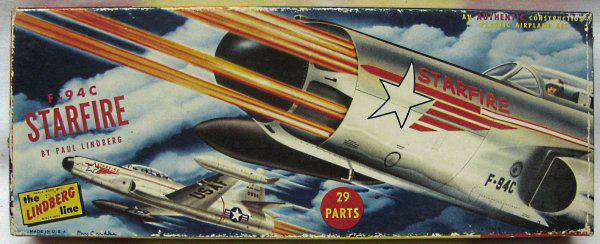
From July 1951 to May 1954, the 387 machines of the last modification were released. Most of these units were located in the States, but the 39 Squadron was at one time based in Japan.
During the active operation of the F-94C constantly improved and refined. The aircraft received new, improved ejection seats, new air brakes with fixed deflector deflection positions, as well as a more effective braking parachute. Beginning with the hundredth F-94C, additional launchers on 12 unguided missiles began to be installed under each wing, which theoretically doubled the firepower of the Starfire. Later, new launchers began to be mounted on previously released machines. Due to the fact that a volley of rockets from the nose-mount blinded the pilot, they often took rockets only in the wing wings.
One F-94C was used to test the Hughes GAR-1 “Falcon”, which planned to strengthen the Starfire weapons. At the same time, the aircraft was renamed DF-94С, although the Falcon missiles did not become the standard armament of the Starfire combatant, these experiments allowed them to be introduced on the next generation of interceptors.
One F-94C was equipped with cameras installed in an enlarged nose cone, instead of a locator and missile launchers. The aircraft was renamed EF-94С, where “E” meant “exempted from service”, as the aircraft was in fact research.
As part of the US Air Force, the F-94C served not for long - they were replaced with new fighter-interceptors for a couple of years. The last Starfire was decommissioned by the US Air Force in February 1959.
After the US Air Force was decommissioned, all F-94Cs were handed over to the National Guard Air Force, where they supplemented the early F-94А / В - the entire Starfire now was armed with an interceptor-fighter 21 squadron. The last F-94C was decommissioned by the 179 Squadron of the National Guard interceptor fighters, in the summer of 1959.
In January, Lockheed 1951 was awarded a contract for 113 single-seat 980-75-14 single-seat fighter-bomber, based on the twin all-weather F-94C. A new version of the fighter received the designation F-94D. The main difference from the previous model was the installation of a new wing on 50% larger area. In place of the operator's cab was put an additional fuel tank. At the wing tips and under the wing, 1212-liter tanks could be hung, bringing the total fuel to the 7447 l. The missiles should have been replaced with eight 12,7-mm machine guns. The E-5 fire control system was replaced with a radar rangefinder. Bomb load could reach 1800 kg.
For the evaluation of individual solutions for the F-94D, two F-94В were used, which were equipped with a nose piece along the lines of a fighter-bomber. The experienced YF-94D was almost ready when the 15 of October 1951 of the USAF decided to stop work on this project: The Air Force wanted Lockheed to focus all its efforts on fine-tuning the F-94C interceptor.
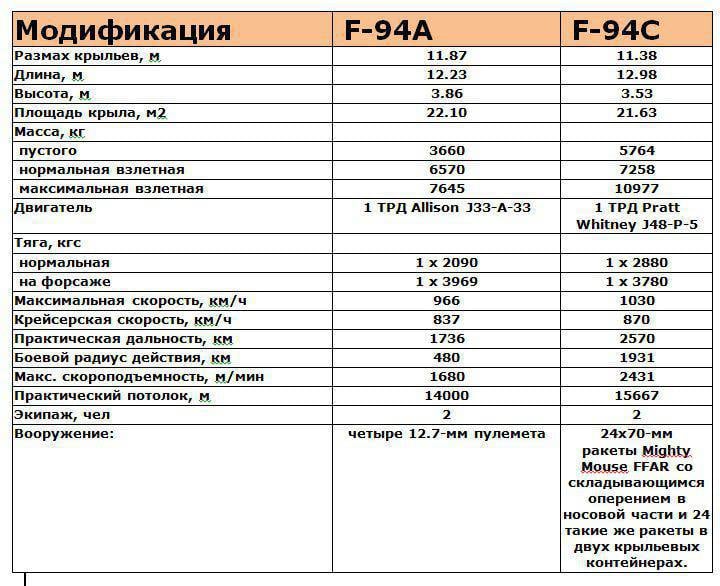
Sources:
A. Chechin, N. Okolelov. F-94 Starfire Interceptor Fighter // All Korean War Jets. M .: Yauza, 2014. C. 58-75.
Chechin A., Okolelov N. F-94 Starfire Interceptor-Fighter // Model Designer. 2015. No. 2. C. 22-27.
Chechin A., Okolelov N. Korny interceptor. F-94 Starfire // Wings of the Motherland. 1997. No.10. C. 17-24.
Firsov A. US Fighters // Aviation Collection. No.14. C. 14-16.
Seidov I. Night battles in the skies of Korea // Aviation and time. 2003. No.2. C. 24-30.
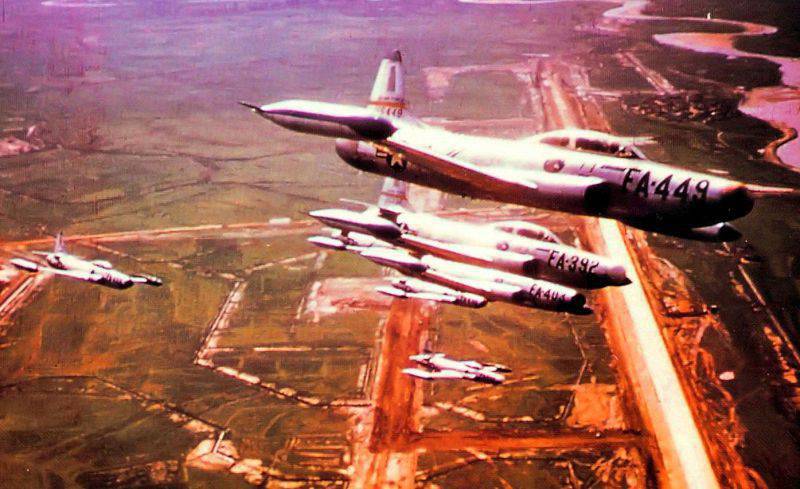
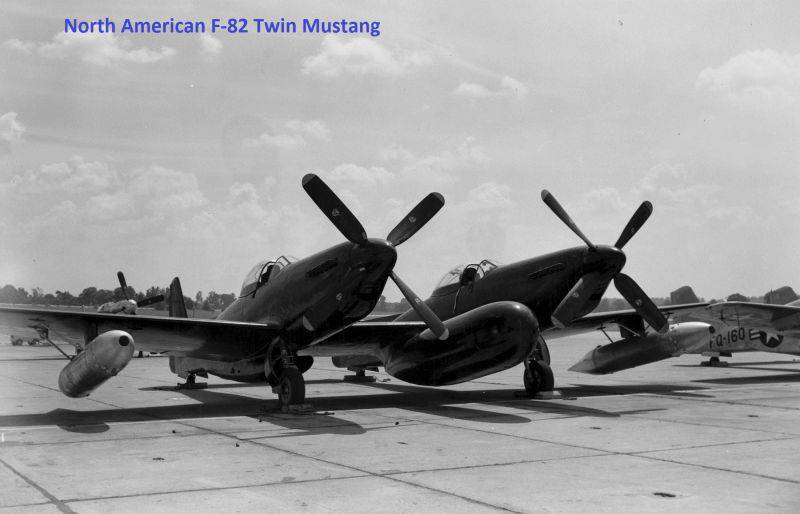
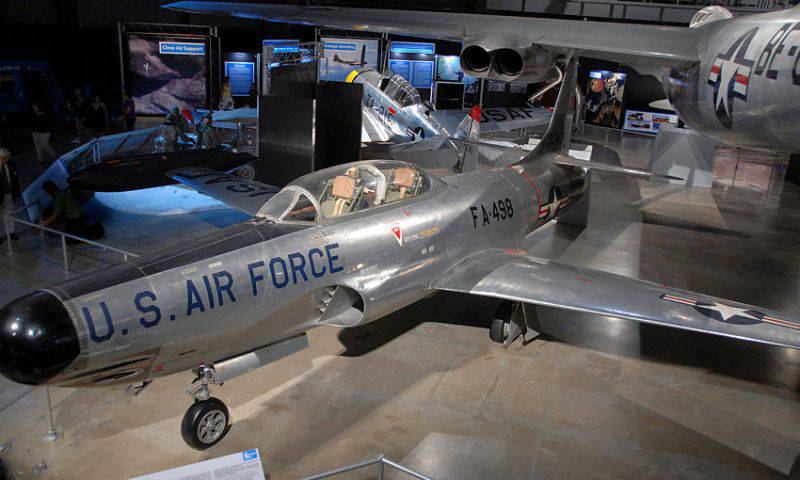
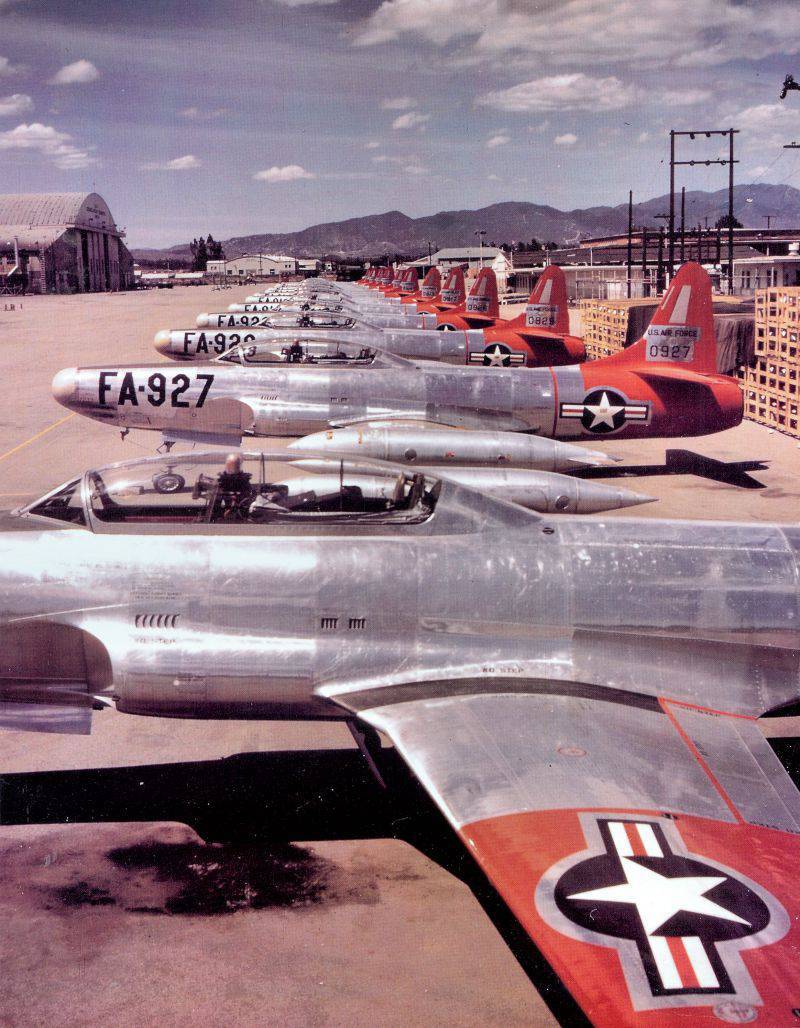
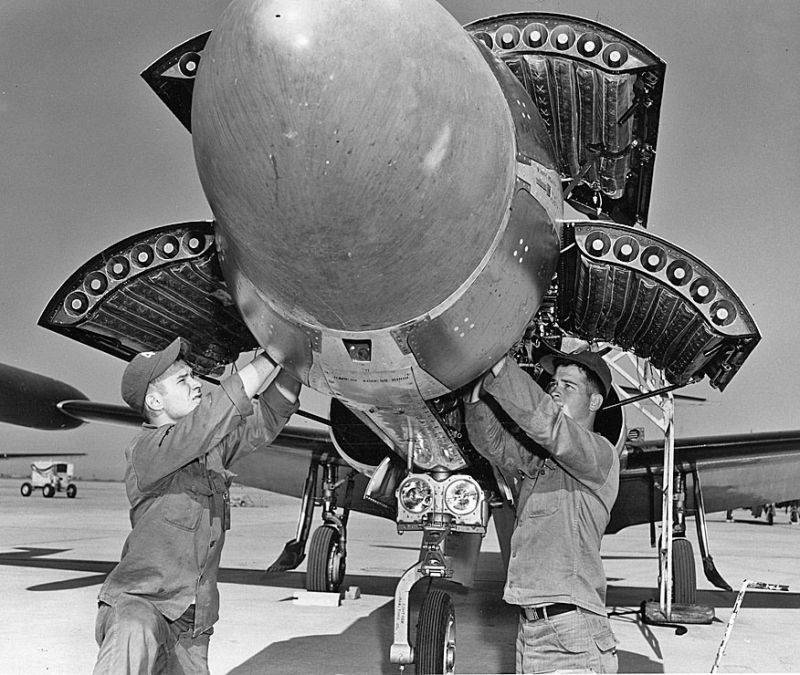
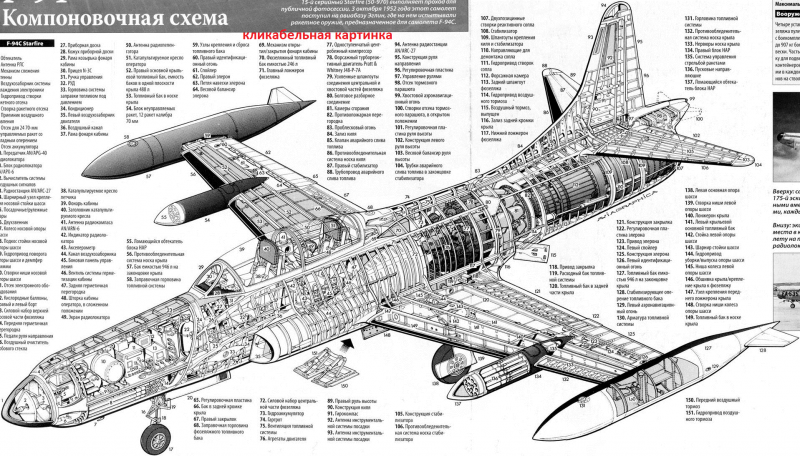
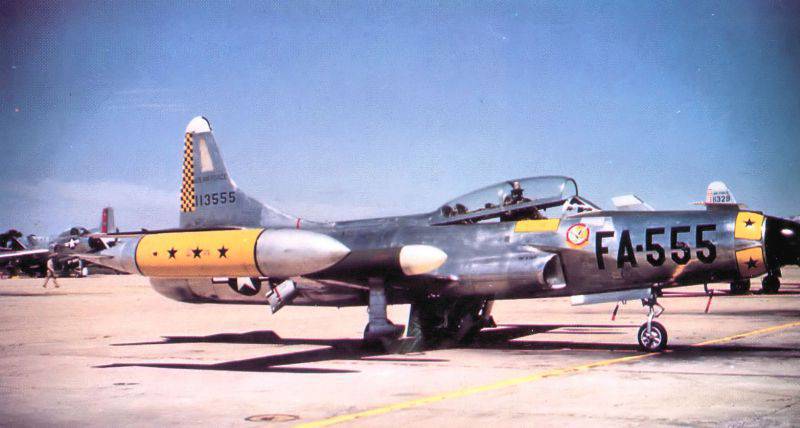
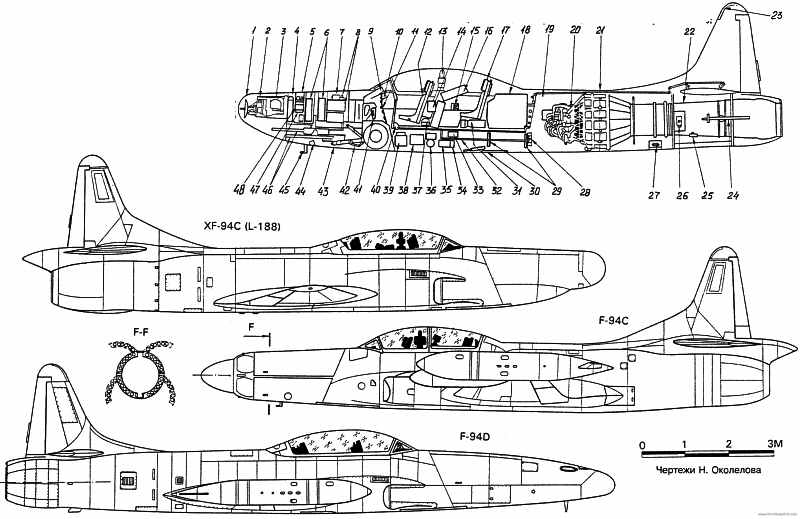
Information